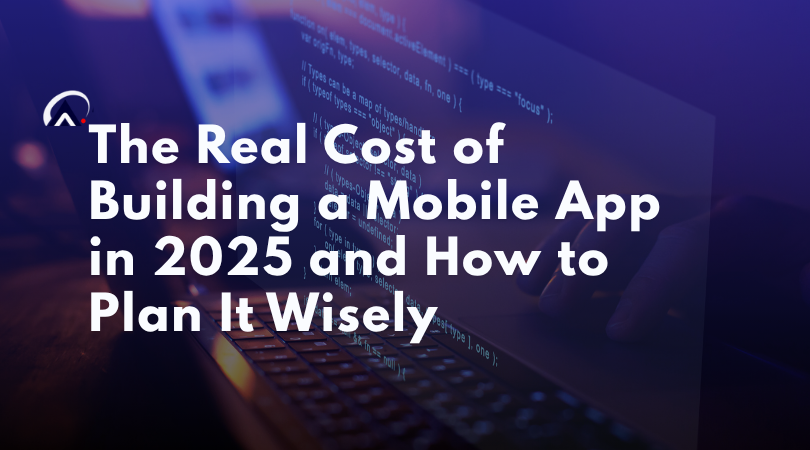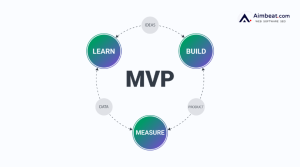When a business decides to build a mobile app, the first question that usually comes up is how much will it cost?
It sounds like a simple question, but the truth is, app development is a lot like building a house. The final cost depends on how big you want it, what materials you choose, and the quality you expect. In 2025, mobile apps have evolved beyond just digital tools, they’re now part of how businesses grow, connect, and compete.
So instead of thinking in terms of “cheap or expensive,” it’s smarter to understand what actually goes into the cost and how to plan your budget in a way that gives you long-term value.

Why Understanding App Cost Is So Important Today
Mobile users today are impatient. They expect fast, stable, and visually appealing apps that just work. Meeting those expectations means your app must be well-designed, scalable, and secure and that doesn’t happen by accident.
When businesses start without understanding the real cost factors, they often face delays, quality issues, or end up paying twice later to rebuild what wasn’t planned well in the first place.
A clear understanding of cost helps you:
- Set realistic budgets before development begins
- Choose between iOS, Android, or a cross-platform approach
- Avoid technical surprises mid-project
- Align your app investment with real business outcomes
What Actually Shapes the Cost of an App
No two apps are the same. The cost depends on a few key decisions you make early on.
1. Platform You Choose
Are you building for iOS, Android, or both?
Building separate native apps for both platforms takes more time and budget, but often provides better performance.
If you want faster delivery at lower cost, cross-platform frameworks like Flutter or React Native allow you to use a single codebase for both platforms.
Each has its pros and cons, which we’ve explored further in our next article: Cross-Platform vs Native App Development: What’s Best for Your Business in 2025.
2. Features and Complexity
Every additional feature adds time and development effort.
A basic app with user login and static content will cost much less than one that includes live chat, payment systems, geolocation, or artificial intelligence.
Before you begin, list down the features that are essential for your first release. Think of others as add-ons for later updates. This keeps your initial investment lean and focused.
3. Design and User Experience
A good design isn’t just about aesthetics, it’s about how easily users can complete actions.
A well-thought-out interface improves engagement and retention, which directly impacts your app’s success.
In 2025, users have no patience for confusing layouts. Investing in clean, intuitive design pays off in user satisfaction and lower support costs.
We’ve explored this further in The Role of UI/UX Design in Mobile App Success.
4. Backend and Infrastructure
Behind every good app is a solid backend. This is what keeps your data secure, your app running smoothly, and your users connected.
Depending on your business needs, this could be a custom-built backend or a cloud-based setup on AWS, Google Cloud, or Azure.
Choosing the right infrastructure early can save you from costly scalability issues later.
5. Integrations and APIs
If your app connects to payment gateways, maps, CRMs, or third-party APIs, it’ll need extra development time.
Some of these services also have monthly or transaction-based fees, which should be part of your overall budgeting.
6. Maintenance and Updates
A well-built app is never truly “done.”
After launch, you’ll need regular updates for OS changes, new device sizes, and evolving user expectations.
On average, annual maintenance can range from 15% to 20% of your app’s initial development cost. It’s not an extra cost, it’s part of keeping your app reliable and competitive.

The Hidden Costs Most Businesses Miss
Even experienced companies sometimes overlook small but important costs:
- App store registration fees: Apple and Google charge developer accounts annually.
- App analytics setup: without tracking, you can’t measure what’s working.
- Testing and QA: ensuring smooth performance across all devices is critical.
Budgeting for these from day one ensures your launch goes smoothly without last-minute surprises.
How to Plan Your App Budget the Smart Way
Here’s how successful businesses approach budgeting for app development:
1. Start with a Clear Scope
Define what problem your app solves and what features are essential. Keep your first version simple and effective.
Once you have user feedback, you can expand further with confidence.
2. Build a Minimum Viable Product (MVP)
An MVP is a cost-effective way to test your concept before going full-scale.
It allows you to see real user reactions and make data-backed decisions.
We’ll be covering this in detail in our upcoming article: How MVP Development Helps Businesses Save Time and Cost.
3. Choose the Right Technology Early
Making the right choice between native and cross-platform early prevents rework later.
It’s one of the biggest budget-saving decisions you can make.
4. Work with a Transparent Partner
The right app development company won’t just code, they’ll guide you through the process, help you prioritize features, and maintain transparency about cost breakdowns and timelines.
If you’re evaluating partners, take a look at How to Choose the Right Mobile App Development Partner. It covers key questions to ask before you begin.

Think Value, Not Just Cost
Many businesses focus only on lowering cost but that often leads to compromises in design, scalability, or security.
A well-built app becomes an asset that enhances your brand, improves customer engagement, and brings measurable returns.
The focus should always be on value creation, not just expense reduction.
An app that users love is the best investment you can make.
Mumbai and Beyond: The Global Edge
While app development has gone global, Mumbai continues to be a leading hub for innovation, creativity, and reliable technical talent.
The city’s mix of skilled developers, startups, and digital businesses makes it a strong base for building apps that compete on a global level.
Whether you’re based in Mumbai or managing a global brand, the principles of smart cost planning remain the same clarity, quality, and long-term thinking.
Final Key Points
App development in 2025 is not just about technology, it’s about strategy.
When you plan your budget with clear goals, realistic timelines, and the right partner, you not only save cost but also build something that truly represents your business.
If you’re considering building an app and want professional guidance, our Mobile App Development Services can help you plan, design, and execute your project with complete clarity and confidence.




